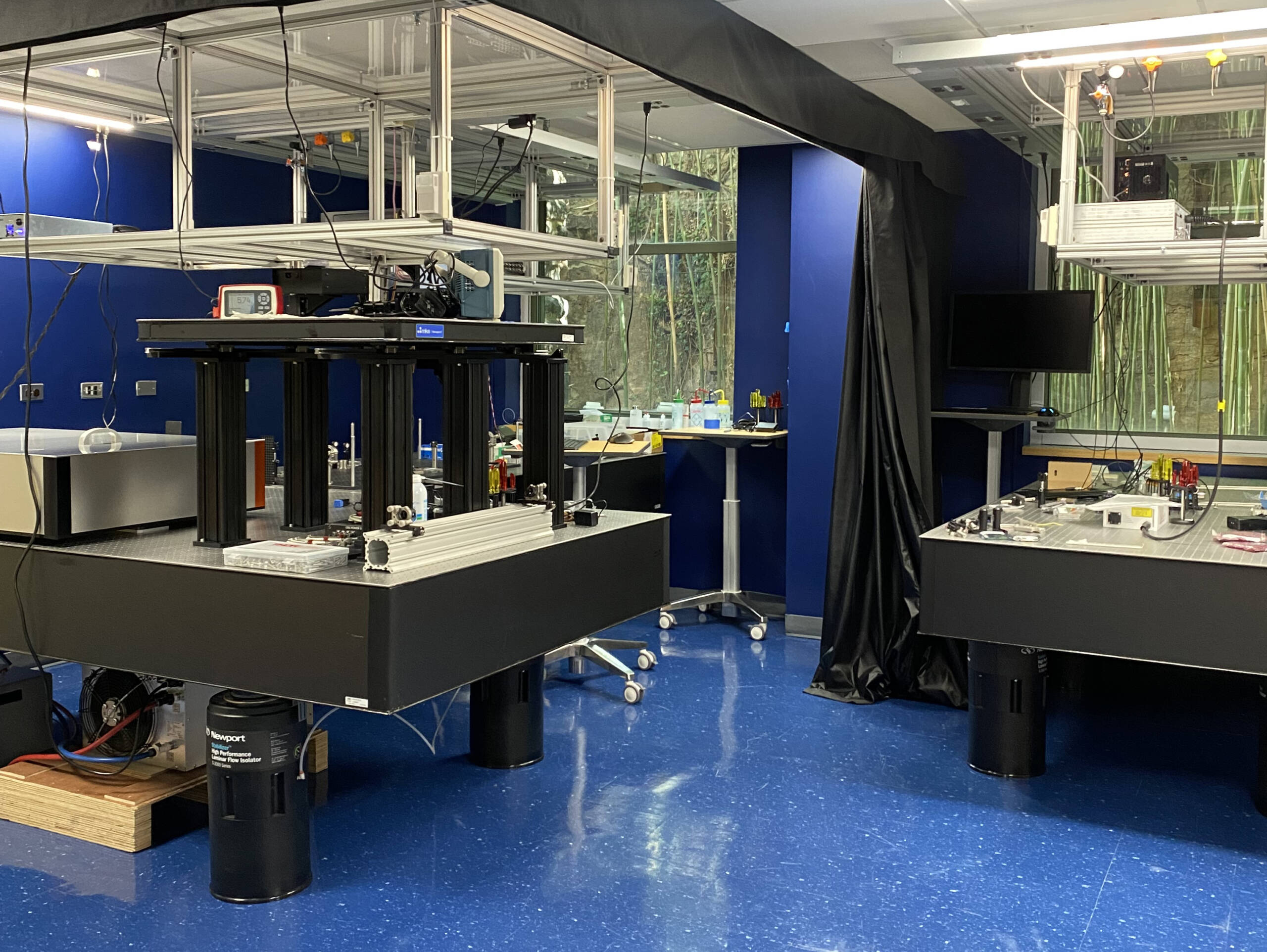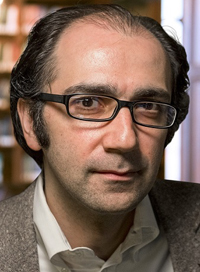New center for ambitious neuroscience projects comes to campus

Some of the instruments in the brain observatory (Raghav K. Chhetri)
Rockefeller researchers now have exclusive access to advanced neuroimaging technologies developed by the new Elizabeth R. Miller Brain Observatory(opens in new window) (MBO), which celebrated its official launch on September 12 at an event in the Carson Family Auditorium.
The goal of the observatory is to support ambitious, long-term research projects that aim to answer neurobiology questions beyond the scope of currently commercially available technologies. Located in three interconnected rooms in Smith Hall, the MBO offers optical imaging technologies that capture views of the brain at an unprecedented scale, resolution, speed, and depth—and a dedicated staff with expertise in advanced optics and computational processing.
The latest interdisciplinary center to host pioneering research at Rockefeller, the MBO is led by Alipasha Vaziri, head of the Laboratory of Neurotechnology and Biophysics(opens in new window). Vaziri’s lab has long focused on developing optical technologies allowing scientists to observe simultaneous activity of many neurons distributed across the brain; it is these technologies that will be available at the MBO.
Advanced neuroimaging
MBO’s flagship instrument is light-beads microscopy (LBM), a two-photon calcium imaging technique developed in the Vaziri lab that can record the activity of more than one million neurons across the entire cortex of the mouse brain simultaneously—a hundredfold increase over previous technologies.
LBM has been used, for example, to reveal that brain activity seems to be a continuous hum rather than staccato noise; explain why practice makes perfect at a neurocircuitry level; and identify how a common reward pathway may shed light on substance use disorders.
New technologies and software will be added to the observatory in the future. “We’d like to offer technologies such as three-photon microscopy for deep tissue imaging, single cell specific optogenetic manipulation, and imaging tools for free-behaving animals using high-resolution holographic optogenetics,” says Vaziri.
The team lead is Raghav Chhetri, who advises and guides Rockefeller scientists on the MBO’s instrumentation. He also develops and refines cutting-edge neuroimaging technologies, which are always in development in response to new research questions.
“We are continuously reaching out to vendors to see what’s possible,” Chhetri says. “Not finding what we need drives us to push the boundaries of what we want to achieve technologically.”
The observatory uses sophisticated data analysis, computational modeling, and machine-learning techniques to process raw neuroimaging data into scientific insights. Computational scientist Flynn O’Connell manages this process, which includes optimized software packages, open-source analytical tools, and two computational pipelines to extract, motion correct, segment, and deconvolve LBM datasets using either MATLAB or PYTHON implementations of CaImAn, a toolbox for calcium-imaging analysis.
Support and guidance
The MBO aims to support a select group of neuroscience projects at any one time, says Vaziri. “We’re devoting most of our capacity for mature projects with well-defined goals and a clear future impact, but we’ll also reserve some bandwidth for exploratory projects where the researcher would benefit from a short-term acquisition of data that they can then use as evidence of a valid approach,” he says.
Regardless of timeframe, the team will offer full support and guidance for the duration of the research project.
Rockefeller scientists can propose studies they feel could benefit from MBO’s technology by filling out the application form(opens in new window) on the observatory’s website.
“We don’t think we can find a solution for every problem, but we do think we can identify the problems that are most suited to being addressed with these tools that we’re offering,” Vaziri says.
Future workshops on optics and microscopy are being planned. So too are opportunities for researchers from other institutions to apply for access. “We eventually want to open the observatory to neuroscientists from around the world,” he adds.
Founded in 2022 by a joint initiative of the Kavli Neural Systems Institute and The Rockefeller University, the MBO is supported by Elizabeth R. Miller, a generous benefactor and dedicated friend of the university.



